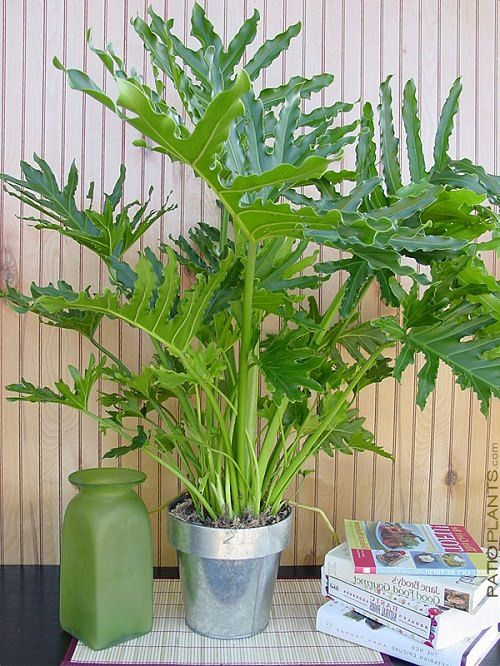
Tall Indoor Plants: A Comprehensive Guide
Tall indoor plants can add a touch of elegance and natural beauty to any room, while also providing numerous health benefits such as air purification and stress reduction. This article will explore the best tall indoor plants, their care requirements, and tips for maintaining them.
Benefits of Tall Indoor Plants
- Air Purification:
- Tall indoor plants are known for their ability to purify the air by removing pollutants and toxins. This can significantly improve indoor air quality, contributing to better health and well-being.
- Aesthetic Appeal:
- These plants can grow to impressive heights, making them a striking addition to any room. They can add a vertical element to your decor, creating a sense of balance and harmony.
- Stress Reduction:
- Being around plants has been shown to reduce stress levels and improve mental health. The presence of tall indoor plants can create a calming and peaceful environment.
Best Tall Indoor Plants
Here are some of the best tall indoor plants that can thrive in various conditions:
- Dracaena (Dracaena spp.):
- Height: Can grow up to 10 feet tall.
- Light Requirements: Medium to bright indirect light.
- Watering: Allow the soil to dry slightly between waterings.
- Temperature: Average room temperatures (65-75°F).
- Rubber Plant (Ficus elastica):
- Height: Can grow up to 8 feet tall.
- Light Requirements: Bright indirect light.
- Watering: Keep the soil consistently moist but not waterlogged.
- Temperature: Average room temperatures (65-75°F).
- Bamboo Palm (Chamaedorea seifrizii):
- Height: Can grow up to 12 feet tall.
- Light Requirements: Medium to bright indirect light.
- Watering: Keep the soil consistently moist but not waterlogged.
- Temperature: Average room temperatures (65-75°F).
- Kentia Palm (Howea forsteriana):
- Height: Can grow up to 10 feet tall.
- Light Requirements: Medium to bright indirect light.
- Watering: Allow the soil to dry slightly between waterings.
- Temperature: Average room temperatures (65-75°F).
- Ficus Tree (Ficus benjamina):
- Height: Can grow up to 10 feet tall.
- Light Requirements: Bright indirect light.
- Watering: Keep the soil consistently moist but not waterlogged.
- Temperature: Average room temperatures (65-75°F).
Care Requirements
To ensure your tall indoor plants thrive, follow these general care guidelines:
- Lighting:
- Most tall indoor plants prefer medium to bright indirect light. Direct sunlight can be too intense and may cause leaf burn.
- Watering:
- Overwatering is a common mistake. Allow the soil to dry slightly between waterings to prevent root rot.
- Temperature:
- Most plants prefer average room temperatures between 65-75°F. Avoid placing plants near heating or cooling vents.
- Humidity:
- While many plants can adapt to average humidity levels, some prefer higher humidity. You can use a humidifier or group plants together to create a microclimate.
- Pruning and Grooming:
- Regular pruning helps maintain the plant’s shape and promotes healthy growth. Remove dead or dying leaves to prevent the spread of disease.
Table: Key Details of Tall Indoor Plants
| Plant | Height | Light Requirements | Watering | Temperature | Humidity |
|---|---|---|---|---|---|
| Dracaena | Up to 10 ft | Medium to bright indirect | Dry slightly between waterings | 65-75°F | Average |
| Rubber Plant | Up to 8 ft | Bright indirect | Consistently moist but not waterlogged | 65-75°F | Average |
| Bamboo Palm | Up to 12 ft | Medium to bright indirect | Consistently moist but not waterlogged | 65-75°F | Average |
| Kentia Palm | Up to 10 ft | Medium to bright indirect | Dry slightly between waterings | 65-75°F | Average |
| Ficus Tree | Up to 10 ft | Bright indirect | Consistently moist but not waterlogged | 65-75°F | Average |
| Source | Plant – Wikipedia |
FAQ Section
Q: What are the benefits of having tall indoor plants?
A: Tall indoor plants provide several benefits, including air purification, aesthetic appeal, and stress reduction.
Q: Which tall indoor plants are best for low-light conditions?
A: While most tall indoor plants prefer medium to bright indirect light, some like the Dracaena and Kentia Palm can tolerate lower light conditions.
Q: How often should I water my tall indoor plants?
A: The watering frequency depends on the plant species. Generally, allow the soil to dry slightly between waterings to prevent overwatering.
Q: What is the ideal temperature for tall indoor plants?
A: Most tall indoor plants prefer average room temperatures between 65-75°F.
Q: Do tall indoor plants require high humidity?
A: While some plants prefer higher humidity, many can adapt to average humidity levels. Using a humidifier or grouping plants together can help create a microclimate.
Q: How do I prune and groom my tall indoor plants?
A: Regular pruning helps maintain the plant’s shape and promotes healthy growth. Remove dead or dying leaves to prevent the spread of disease.
Conclusion
Tall indoor plants are a great way to enhance the beauty and health benefits of your indoor space. By choosing the right plants and following proper care guidelines, you can enjoy the many advantages these plants offer. This comprehensive guide aims to provide readers with a detailed understanding of the best tall indoor plants, their care requirements, and tips for maintaining them.This article has covered the benefits, care requirements, and specific details of several popular tall indoor plants, ensuring that readers can make informed decisions when selecting and caring for these plants. By following these guidelines, you can ensure your tall indoor plants thrive and continue to provide their numerous benefits.


